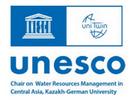



Dates: 31 May to 1 June 2018
Renewable energy, referred to as “The Future Energy”, is already turning into “The Energy of Now”. 2016 was a critical year when the cost of producing energy from renewable sources reached the same level as that from fossil fuels. All Central Asian countries have adopted specific programmes to promote renewable energy, including the construction of five solar power plants of more than 100 MW over the next decade in Uzbekistan, the implementation of 190 small hydropower plants in Tajikistan and the promotion of wind and solar energy production in Kazakhstan.
Outdated power grid infrastructure and insufficient electricity production have left thousands of people without a reliable electricity supply. Therefore, small hydropower plants, small photovoltaic panels and small wind turbines can also provide sufficient and stable energy supply for these people. However, the share of renewable energy sources remains very limited. Thus, along with examining the technical aspects of renewable energy deployment, we will look at various aspects of energy management in the four countries.
Project Objective:
Educational trip on renewable energy in Central Asia (Kazakhstan, Kyrgyzstan, Uzbekistan, Tajikistan) is a unique opportunity to study existing facilities for alternative energy sources. The visit to RE facilities helped students to visually investigate the features of power plants, technical and technological characteristics, schemes of connection to the energy system, existing problems and possible ways of their solution, and further to use the data obtained in their research papers.
Research questions of the project: for a qualitative study of RE facilities, students are recommended to study the following issues:
Topics for research papers:
Results:
One of the objectives of this project was to create interactive lectures on topics related to the sites visited. According to the presented topics, the aims and objectives of each interactive lecture were outlined. The content of the lecture was discussed according to the aims and objectives before the visit. The interactive lecture consists of the following elements: slides, video, photo, audio and lecturer's text. Before the trip, a plan, a list of tasks and persons responsible for certain elements of the interactive lecture are created. After the trip, the interactive lectures are compiled based on the prepared materials using specialized software.
For more information, please, contact:
Alexey Kobzev, Project Manager for Renewable Energy and Climate Change, DKU, kobzev@dku.kz